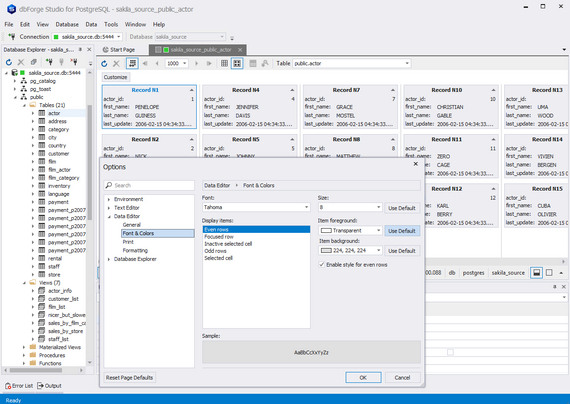


The latter option will prompt you for the quantity first. They both open a new query with a "SELECT *" query started and run it. Tables have the extra option to "Select Top 1000" or "Select Top.". The "Refresh Items" option reloads the sub-nodes for that item, useful if there were structural changes to the database and you want the explorer to reflect them. You can remove connections from the connection context menu or the command palette command "PostgreSQL: Delete Connection".Įach item in the explorer has it's own context menu, and you can start a new query from any level (or the command palette "PostgreSQL: New Query"). You can add a PostgreSQL connection in the explorer or via the command palette command "PostgreSQL: Add Connection"
#Best postgresql client windows gui code
Connection aware code completion (keywords, functions, tables, and fields).Quickly change connection database by clicking the DB in the status bar.Individual editors can have different connections.Selected query in ANY file (via context menu or command palette).All queries in a pgsql file ( delimited).Quickly select top * (with limit) of a table.List Servers/Database/Functions/Tables/Columns (primary key/type).Note: AWS RedShift is also not supported - there are information schema queries needed that just won't work there Features Note: PostgreSQL versions before 9.4 are not supported. It is possible there are some queries that won't run and report problems - even if they are completely valid ( DROP DATABASE comes to mind).

All code completion keywords, functions, tables, and field names are pulled from the current connection to try to keep everything relevant. This facilitates query diagnostics, code completion, and function signatures. There is a language service that should keep at most a single connection open to the database (assuming one was selected). The explorer is a visual aid for helping to craft your queries. While there is a database explorer it is NOT meant for creating/dropping databases or tables. This is a query tool for PostgreSQL databases.


 0 kommentar(er)
0 kommentar(er)
